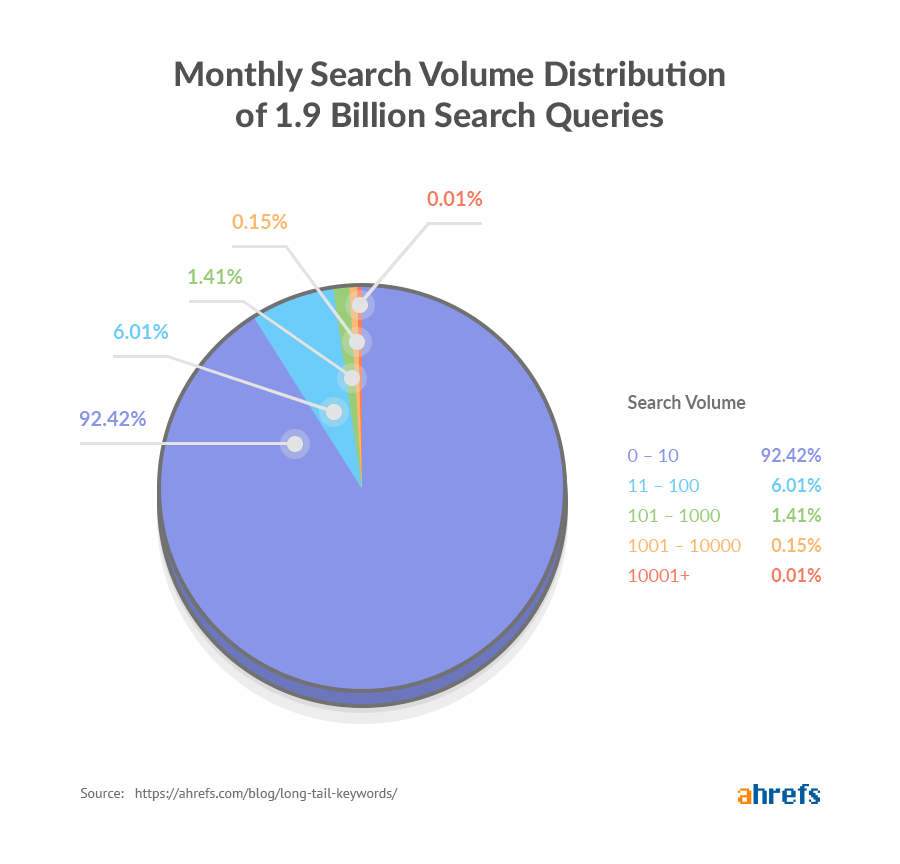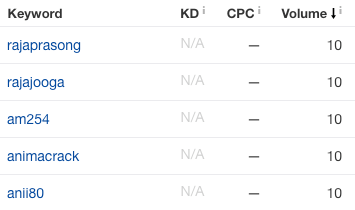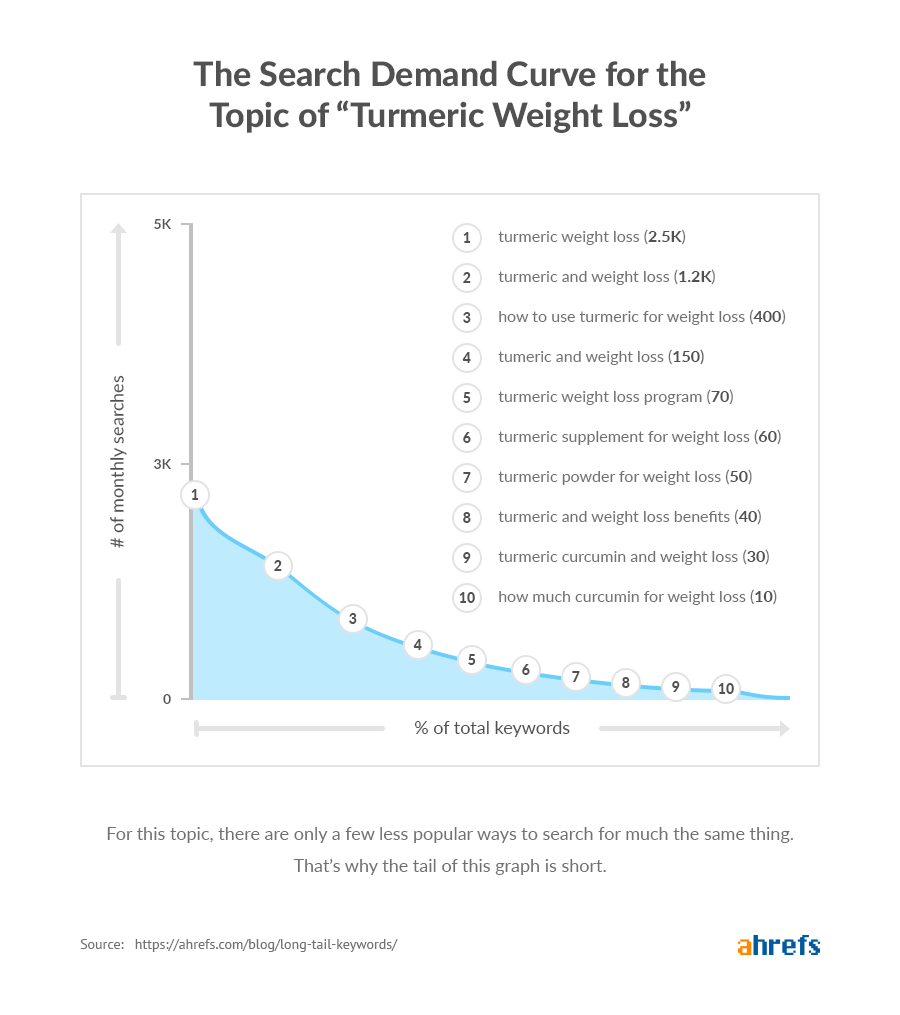Going to the next level on keyword research
One of the first steps of a well researched keyword strategy is to define your long tail keywords. But what are long tail keywords exactly? One of the first tactic to use is to look for the correcto long tail keywords.

Long-tail keywords?
Long-tail keywords are terms with low search volumes. Despite what many people think, it has nothing to do with how long or short a keyword is, how well it’s likely to convert, or how specific it is.
Why are they called long-tail keywords?
We’ll get to that in a second.
For now, you should know that the vast majority of Google searches are very specific and unpopular (i.e., long-tail).
Ahrefs analyzed the ~1.9 BILLION keywords in Ahrefs’ US database and found that a whopping 92.42% of them get ten searches per month or fewer.

Let’s “unfold” this pie-chart onto a (simplified) scatter graph.

Do you see why less popular keywords are called long-tail keywords now?
Joshua Hardwick
From that same study of 1.9 BILLION keywords, we discovered that 29.13% of keywords with 10,001+ monthly searches are made up of three or more words.

Here are some examples of “long” keywords with high monthly search volumes:

Also, 13.53% of keywords with ten searches per month or fewer consist of only one or two words.
Here are some examples of “short” keywords that fall on the long tail of the search demand curve:

Key takeaway: You can’t (and shouldn’t try to) determine Keyword popularity by looking at the number of words in a query. Short search queries can be “long-tail” keywords, and long queries can be “head” keywords.
In other words, be aware of your biases and don’t judge the search popularity of keywords by their length in words.
Each topic has a ‘search demand curve’ of its own.
Here’s what it looks like for the topic of weight loss:

You can see that while there are a few “head” terms, there’s also a very long tail consisting of thousands of low-volume keywords. All of those are part of the same overarching topic.
But this isn’t the case for all keywords with low search volumes.
Some long-tail keywords are topics in their own right, like “turmeric weight loss.”

Let’s call these “topical long-tail keywords,” for lack of a better name.
Now here’s the crucial point:
You’ll need a different ranking strategy for so-called “topical long-tail keywords” than for “supporting” ones.
Broad and Focused Keywords
Let’s take a look at a few of the top-ranking pages for the long-tail keyword “how to name images for SEO” (80 searches/month).

Whats the difference?
The broad pages that rank in the top positions are there because of their “authority.” They have backlinks from hundreds of referring domains which allows them to “force” their way into the rankings for hundreds of narrower topics.
But Google still ranks some more focused pages for this keyword, which means that there is still chance to rank. Just treat it as a topical long-tail keyword.
In this instance, that would mean creating content about “how to name images for SEO” as opposed to the more generic topic of “image SEO.” Do that, and you won’t need as much “authority” to rank.
Or you could do the opposite:
That is to write about the broader topic, build a ton of links to the page, and watch as it ranks for not only closely related long-tails but also semi-relevant long tails (e.g., “how to make images for SEO”)

